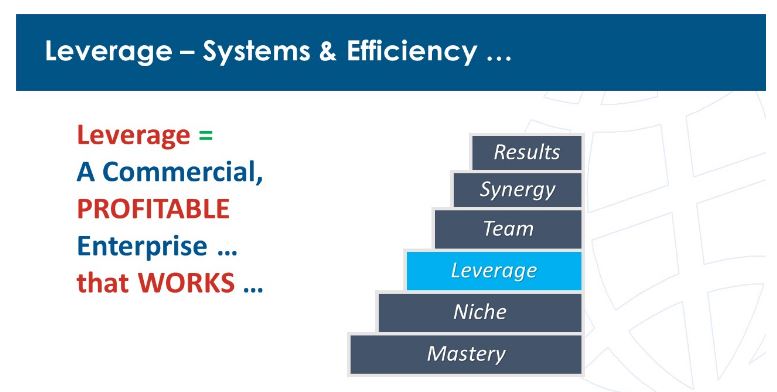How does a small business expand and grow in today’s environment? What does a small business need to do to position themselves for expansion? Answers can vary based on the type of business, but one common factor is the use or application of leverage. A business that applies leverage to grow, means they want to gain an advantage over their competition in their marketplace. Whether financially or in other areas the use of leverage is critical for future business development and growth.
Let’s examine leverage in few different areas. First, and most common, leverage can be defined as the use of debt or financing to purchase, equipment or to open a new location. “When a business is “leveraged,” it means that the business has borrowed money to finance the purchase of assets. Businesses can also use leverage through equity, by raising money from investors” (Murray, 2019).
Financial leverage is not the only way a business can use the concept or application of leverage to make your business more effective and more profitable. ActionCOACH the world’s largest and most successful Business Coaching franchise includes the power of leverage into their coaching system as part of the 6 Steps to Massive Growth. Leverage is the third step in the process of business mastery ActionCOACH uses as the foundation of their business coaching discipline with clients
.
Keep in mind that the definition of leverage as ‘the exertion of force by means of a lever or an object used in the manner of a lever” and “use (something) to maximum advantage.’ Ultimately, leverage is about gaining an advantage.
To gain real advantage within your business you need to “systemize the routine” as Brad Sugars, the CEO and Founder of ActionCOACH notes. Creating systems allow business owners to ‘Save Your Self Time Energy and Money’. Systems improve efficiencies and allows the business to leverage data, marketing investments, and even the skills of the employees within the business. Sugars continues, “Leverage is the concept of ever more with ever less”.
Establishing systems means the business begins to operate more methodically. Routine tasks are systemized to ensure that best practices are leveraged for faster production, less rework, and to better use of resources. Systems allows employees to run the business at a higher capacity. Before you can effectively apply leverage, your business needs to have some foundation.
ActionCOACH and Sugars have a list of areas your business must have solidified to ensure leverage can be applied throughout your business.
1 VISION STATEMENT – This ensures you have a BIG AUDIACIOUS goal for your business in the long term.
2 MISSION STATEMENT – This roadmap outlines how you are going to achieve the Vision you have outlined.
3 CULTURE POINTS – This is a list of principals everyone in your organization follows to meet the businesses objectives and goals.
4 SMART GOALS – This ensures that you have a methodology to achieve results by having specific, measurables, attainable/actionable, realistic and time sensitive goals.
5 ORGANIZATION CHART – This ensures you have the right positions for future growth.
6 POSITIONAL CONTRACTS – These are job descriptions that outline the function and the areas of influence each employee will be responsible for and outlines how the employee will be measured on their performance.
7 KPIs – These key performance indicators detail how you and your team measures progress and aligns results to profits.
8 MANUALS & SOPs – These documents memorialize how things are done in every department. Use checklists, questionnaires, flow charts, video etc. to document process, duties, and job activities to achieve results.
Once an organization has these fundamentals in place, it is in position to apply the principal of leverage to get the best results and get more productivity from their team. Like a lever you may use to gain some advantage when lifting a heavy object, using leverage in your business means you use your systems as the lever to move your business to the next level.
Harness the expertise of your team, maximize the power of your business data, and leverage your processes to make your business more profitable. Continue to improve your systems over time so that your team can run your business even when you aren’t there.





